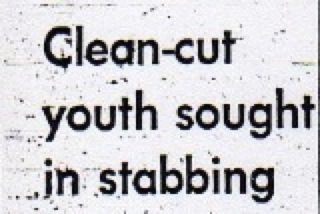I keep seeing people refer to the Riverside Desk Poem that was discovered many months after Cheri Jo Bates’ murder as being about her death. But it cant be about her.
1) The poem mentions her new red dress. But Bates was only wearing red capris. Her dress was pale yellow.
2) The poem staes she’ll live as someone will find her. But Bates was widely known to be dead by 9.30am next day. Unless the poem was written that night, it cant be about her.
Therefore, the poem has to be either a piece of fiction or about a different attack.
Does anyone know of another Riverside attack where the victim was wearing a red dress?
Nobody knows when the desktop poem was authored. It could conceivably have been created prior to October 30th 1966. For what it’s worth, I suspect that the woman stabbed near the Riverside City College on April 13th 1965 by Rolland Taft was wearing a red dress, and became the inspiration for the desktop poem. The Press and Daily Enterprise headline on April 17th 1965 was entitled Clean-cut Youth Sought For Stabbing. That headline should ring a bell. Find the full article (or associated articles) and you may find the red dress.

http://mk-zodiac.com/TheOriginofthePoem … heory.html
https://www.zodiacciphers.com/
“I simply cannot accept that there are, on every story, two equal and logical sides to an argument.” Edward R. Murrow.
It’s always been my opinion that the Desktop Poem was a morbid poem from the point of view of a suicidal woman. I never saw any connection between it and the CBJ murder or any other.
“Murder will out, this my conclusion.”
– Geoffrey Chaucer
It’s always been my opinion that the Desktop Poem was a morbid poem from the point of view of a suicidal woman. I never saw any connection between it and the CBJ murder or any other.
I suppose it all depends on whether we interpret "just wait till next time" as an ominous threat, or an inevitable conclusion to suicide.
https://www.zodiacciphers.com/
“I simply cannot accept that there are, on every story, two equal and logical sides to an argument.” Edward R. Murrow.
